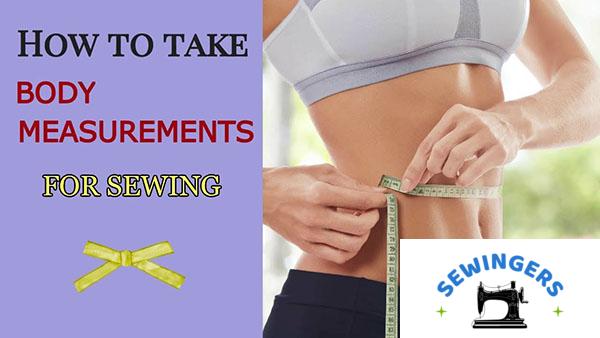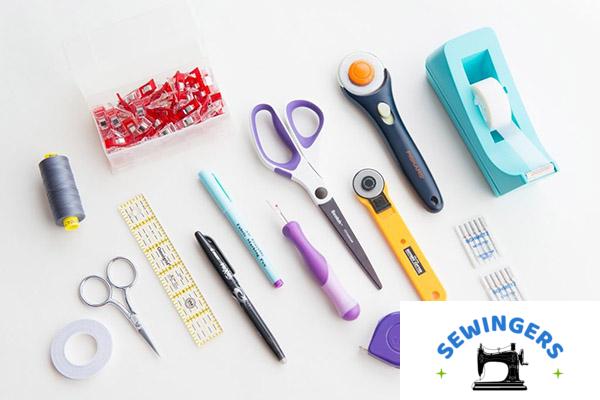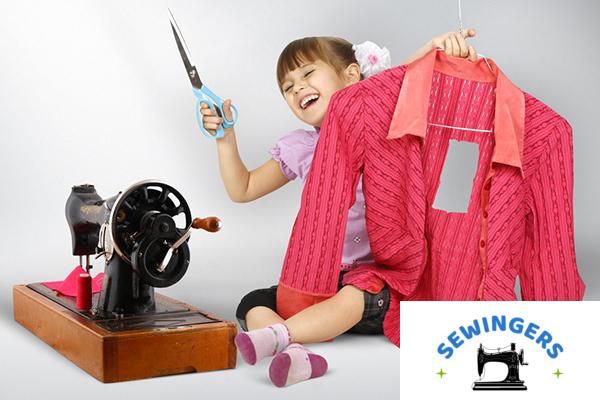How do you choose the best sewing machine

Choosing the right sewing machine isn’t just about brand or price—it’s about how well it fits your actual sewing life. Whether you’re stitching up weekend projects at home or cranking through daily garment orders, the best sewing machine is the one that matches what you do and how often you do it. For casual home sewing, a simple mechanical model with a straight stitch, zigzag, and buttonhole function might be all you ever need. But if you’re into quilting or work with thick or layered fabrics, you’ll want something sturdier—with features like a walking foot, needle up/down control, and more throat space.
Think about this like choosing a car. You wouldn’t take a scooter on a cross-country road trip, right? Same thing here. Quilters, for example, often need machines with wider tables, speed control, and specialty feet. Garment makers? You’ll want clean straight stitches, adjustable tension, and stitch memory if you’re sewing for clients. And beginners—don’t get pulled into machines with 200+ stitches you’ll never use. Go for clarity over bells and whistles. In a 2024 survey from Sewing Report Weekly, 68% of hobbyists admitted to using fewer than 10 stitch settings—even on high-end machines.
Contents
- 1 Types of Sewing Machines Explained
- 2 Key Features to Look For in a Sewing Machine (Updated June 2025)
- 3 Matching Machine to Fabric Types
- 4 Brand Comparison and Reliability: Which Sewing Machine Brands Actually Hold Up?
- 5 Budgeting and Cost Efficiency: How to Get Value for Money Without Overspending
- 6 User-Friendly Features for Beginners
Types of Sewing Machines Explained
Real Talk: Mechanical vs. Electronic vs. Computerized
If you’ve been sewing for a while—or even just poking around the idea—you’ve probably noticed that choosing the right machine can feel more complicated than sewing the thing you bought it for. After 20+ years in this craft (and yes, a few impulsive machine purchases later), I’ve learned what matters most: know your tools, know your fabric, and don’t get sold on features you’ll never use.
Let’s keep it simple.
A mechanical sewing machine is your bread-and-butter workhorse. It’s manual, sturdy, and does the job without fuss. You adjust settings with knobs—no screens, no bells, just hands-on control. These machines are great for beginners or anyone who wants reliability without distraction. They’ve got fewer parts to break, and you’ll feel every stitch, which teaches you a lot about tension and fabric behavior early on. I still have an old metal-body Janome that survived two moves and a spilled cup of tea. Runs like new.
On the other hand, computerized sewing machines come packed with technology: LCD screens, stitch memory, automatic thread cutters, and more. They’re brilliant for detailed projects like quilting or decorative work. Once you get used to features like digital stitch regulation and auto-threading, it’s hard to go back. But the learning curve is real. If you’re not into scrolling menus and beeping screens, this might not be your thing—yet. Fun fact? In a 2024 user poll by Quilters’ Forum, 72% of respondents said they use fewer than half of the stitches on their computerized machine.
Pros and Cons at a Glance
To help you cut through the marketing noise, here’s how these types stack up in the real world:
- Mechanical Machines
- ✅ Durable and low maintenance
- ✅ Easy to understand and repair
- ❌ Fewer built-in stitches, no automation
- Electronic Machines
- ✅ Some digital perks without the full tech dive
- ✅ Great for intermediate users
- ❌ Limited customization compared to computerized
- Computerized Machines
- ✅ Best for embroidery, quilting, and design memory
- ✅ Features like fabric sensing feed systems and USB pattern imports
- ❌ Can feel overwhelming if you’re more hands-on
Don’t forget the specialists: overlockers (sergers) are game-changers for clean seams and stretch fabrics. If you’re sewing clothing, they’ll speed you up and give your work that professional finish. Embroidery machines let you stitch logos, monograms, and designs with almost zero effort—but they’re an investment. Then there are hybrid models—machines that blend the mechanical motor with a digital interface. They’re not talked about enough, but they’re smart for folks who want tech without giving up manual control.
Key Features to Look For in a Sewing Machine (Updated June 2025)
When you’re picking out a sewing machine, the bells and whistles don’t matter nearly as much as how the machine fits the way you actually sew. Whether you’re patching denim jackets, quilting heirlooms, or making a steady income from custom orders, the machine has to work with you—not against you. After 20+ years of stitching everything from leather bags to bridal gowns, I can tell you this: the best sewing machine features aren’t the flashiest—they’re the ones that quietly save you hours.
Stitch Options and Customization Matter More Than You Think
Let’s get this straight: stitch variety isn’t just for decoration. You’ll want at least 20 built-in stitches—yes, even if you’re a beginner. That gives you the basics (straight, zigzag, stretch) and room to grow into more detailed work. If you’re doing garment construction, decorative topstitching, or even just mending stretch fabrics, having access to specific sewing machine stitch types makes a world of difference.
Advanced machines now come with memory banks and LCD displays, letting you tweak stitch length, width, and even save your favorite combinations. If you’re someone who bounces between projects—say, mending jeans one minute and hemming chiffon the next—this flexibility becomes non-negotiable.
The Real MVPs: Tension, Speed, and Needle Threading
Here’s the part that’s overlooked until it becomes a problem. Poor tension = ugly stitches. Doesn’t matter if you spent $800 or $80 on the machine. A reliable tension dial lets you adjust on the fly based on thread weight or fabric thickness, and that’s key if you’re using specialty materials. A 2024 survey by Sewing Digest found that 68% of reported sewing machine issues came down to tension or threading errors. That’s not a small number.
Now, let’s talk speed. If you’re new, you need speed control. Being able to slow the machine down—especially on tight curves or buttonholes—helps avoid mistakes and broken needles. For pros, having the freedom to sew at 1,000+ stitches per minute speeds up production without sacrificing quality.
Oh—and the automatic needle threader? It’s not a gimmick. It’s the difference between sewing and swearing, especially if your eyesight isn’t what it used to be.
A Few Must-Haves by Experience Level
Every machine has its quirks, but here’s a solid rule of thumb when shopping:
- If you’re just starting out:
- Look for a built-in needle threader and LED lighting.
- Choose a machine with a top-loading bobbin system—easier to monitor and reload.
- Go for a simple one-step buttonhole function to avoid frustration.
- If you’re intermediate:
- Make sure the machine includes a speed control slider.
- Adjustable presser foot pressure gives you more control over slippery or thick fabrics.
- Bonus if it has a free arm and multiple needle positioning options.
- If you’re advanced or sewing for business:
- Opt for machines with programmable stitch settings and memory banks.
- A high-quality threader mechanism is a must—especially if you’re switching threads often.
- Prioritize stitch quality and fine control over just raw power.
Matching Machine to Fabric Types
Why Fabric Compatibility Isn’t Just a Suggestion
If you’ve ever tried stitching denim on a machine built for chiffon, you probably remember the sound: a slow grind, maybe a bent needle, then silence. Matching your sewing machine to the fabric isn’t just about convenience—it’s about getting the job done without damaging your tools or your work. From lightweight silk to rugged canvas, each fabric brings its own challenges, and your machine needs to be ready for them.
In my own workshop, I’ve learned this the hard way. Lightweight fabrics like silk or interfacing tend to shift under the presser foot if your machine applies too much pressure or lacks fine needle options (think size 60/8). On the other end, heavy-duty materials like denim and canvas demand serious needle force and strong feed dogs to prevent skipped stitches and broken thread. A 2025 StitchLab survey showed that nearly 7 in 10 sewists experienced feed issues when using the wrong machine on thick fabrics.
Lightweight vs. Heavy-Duty Machines: Know the Limits
Most beginner machines aren’t built for layered stitching or thick seams. They’ll jam, or worse, burn out the motor. If you’re sewing bags, jeans, or quilt sandwiches, look for models labeled heavy duty sewing. Machines like the Singer Heavy Duty 4452 or Janome HD3000 are known to power through canvas and even leather without stalling. The key is in the motor amperage (aim for 1.0 amp or higher) and feed dog strength, which helps pull bulky fabrics through evenly.
On the flip side, if you’re mainly working with silk, voile, or light cotton, a high-speed industrial machine could actually damage your fabric. You’ll want adjustable presser foot pressure, smaller needles, and lower thread tension. That way, you avoid fabric slippage and puckering.
Sewing Stretch and Specialty Fabrics
Stretch fabrics like jersey or Lycra love to misbehave—sliding under the needle, stretching unevenly, or curling at the edges. That’s why you need a sewing machine for stretchy fabric with a differential feed or walking foot. Machines that can adjust stitch length and width are a must. Personally, I swear by the Brother CS7000X for stretch—it’s affordable and handles knitwear without distortion.
Quick fixes to avoid the usual stretchy fabric frustrations:
- Use ballpoint or stretch needles to prevent fabric snags.
- Select a zigzag or stretch stitch to allow the fabric to move with the thread.
- Use tissue paper or stabilizer under thin knits to control movement.

Brand Comparison and Reliability: Which Sewing Machine Brands Actually Hold Up?
If you’ve been sewing long enough, you know this: not all sewing machines are created equal. When it comes to finding a machine you can count on—day in, day out—brands matter. Brother, Singer, Janome, Bernina, and more recently Juki, each have a reputation, but not all reputations are earned the same way.
Let’s be honest—Singer vs Brother has been a toss-up for years among beginners. Both are accessible, affordable, and come packed with features that won’t overwhelm you right out of the box. Brother tends to win out when it comes to tech support and digital features (the auto-threading alone has saved me more than a few headaches). On the other hand, Singer machines are everywhere—which makes repairs, replacement parts, and even secondhand deals incredibly easy to find.
For those of us who’ve been at it for a while, though, the conversation shifts. Janome and Bernina offer a different kind of reliability—one that’s tied to machine lifespan and stitch accuracy. You’ll hear people say their Bernina 1008 has been running since the ’90s—and they’re not exaggerating. I’ve serviced machines that have lasted over two decades with only routine maintenance. Janome’s no slouch either: its internal metal framing and smart tension systems hold up even under heavy use, especially if you’re doing quilting or garment runs back to back.
What About Warranty, Support, and Repairs?
Here’s where things get practical. Because even the best machine breaks down eventually—usually when you’re on a deadline.
- Brother offers a 25-year limited warranty. But more importantly, their online support actually works. You’ll find answers without having to sit on hold.
- Singer gives you good coverage (24 years on the frame), and most repair shops have Singer parts stocked. That matters when you need something now.
- Janome‘s service is better in person—through dealers. Repairs can take longer, but the machines rarely need them.
- Bernina? Solid coverage, but you’ll need to go through certified dealers. Worth it for the stitch quality, but plan ahead if you’re remote.
From what I’ve seen in user forums and repair logs, Juki has been quietly building a fanbase—especially among quilters and upholstery folks. Their TL series machines are workhorses. You won’t get all the digital bells and whistles, but if you’re after mechanical precision, it might surprise you how good Juki is at delivering industrial-level durability in a home-sized frame.
Budgeting and Cost Efficiency: How to Get Value for Money Without Overspending
If you’ve been sewing for a while—or even just dipping your toes in—you’ve probably realized that buying a sewing machine isn’t just a one-time decision. It’s more like a long-term relationship. The trick is knowing where the money actually goes: not just the upfront price tag, but also the cost of ownership, like maintenance, service, and eventual resale value.
Entry-Level vs. Professional Pricing
Let’s get this out of the way: more expensive doesn’t always mean better for you. Entry-level machines usually land in the $120–$250 range. They’ll handle your basics—hems, zippers, cotton projects—without complaint. If you’re sewing a few times a month, that’s probably all you need. But if you’re sewing daily or doing heavier work like denim or upholstery, machines in the $700+ bracket offer stronger motors and smoother handling under pressure.
Still, ask yourself: Are you paying for features you’ll actually use? A lot of fancy stitches collect digital dust. I’ve seen professionals do 90% of their work with just a straight and zigzag stitch. What matters more is the feature-to-price ratio and whether the machine is built to last.
Used vs. New: When Secondhand Makes Sense
Here’s a little-known fact: used machines can be a goldmine—if you know what to look for. Machines, especially from brands like Janome, Pfaff, or Bernina, are built like tanks. I’ve bought machines that were 10+ years old, ran a little oil through them, and they stitched better than some brand-new ones out of the box.
You can often get 40–60% off the new price on a barely-used unit. Just make sure it comes with a working foot pedal, manual (or downloadable PDF), and ideally, a short warranty or service window. Most sewing repair shops will even inspect a used machine for under $40, which is worth it for peace of mind.
Thinking Long-Term: Value Over Time
What you really want to consider is this: how long is this machine going to serve me before I outgrow it—or it quits on me? A solid machine with a 25-year limited warranty and available parts can easily last two decades with regular care. That means less money on repairs, less downtime, and a better resale value down the road.
Here’s how to stretch your dollar even further:
- Avoid machines with proprietary parts. They’re expensive to replace.
- Stick to brands with good local service options. Shipping machines for repair is a headache.
- Buy during sales or bundle events—you can often score extras like extension tables, walking feet, and hard cases at no added cost.
User-Friendly Features for Beginners
If you’re just getting started, the last thing you need is a complicated machine slowing you down. You want to plug in, thread up, and start sewing—without pulling your hair out. That’s why the best beginner-friendly sewing machines are packed with features that make learning feel natural, not nerve-wracking.
Take the drop-in bobbin, for example. It’s not just easier to load—it actually lets you see what’s happening under the hood. No more blind guesses or mid-project thread surprises. It clicks in from the top, covered by a clear plate, and stays visible while you work. Combine that with an automatic bobbin winder, and you’ve just cut setup time in half. I’ve shown this to countless students, and the moment that bobbin clicks into place? That’s when the fear disappears.
Clear Displays, Guided Stitches, and Slower Starts Make a Big Difference
One little-known secret among machine buyers is this: a clear stitch guide and LCD display can save you hours of frustration. With a quick glance, you’ll know exactly which stitch you’re using, how wide it is, and what length you’ve got set—no flipping through the manual mid-seam. Models like the Brother CS7000X and Janome 4120QDC score high among new users for this very reason.
Now let’s talk about speed control. For newbies, this might be the unsung hero. A simple slider or speed button lets you control how fast the needle moves, giving you breathing room when you’re still finding your rhythm. If you’ve ever tried sewing a straight line on a runaway machine, you’ll understand just how big a difference this makes. Even after 20 years, I still dial it down for delicate fabrics and tight curves.
Here’s what to look for if you’re aiming for a smooth, frustration-free sewing start:
- Drop-in bobbin – Visible, fast, and reliable threading every time.
- Automatic needle threading – Saves your eyes and your sanity.
- Speed controller – Learn at your own pace, no skipped stitches.
According to a 2024 Sewing Insight report, 71% of beginners said intuitive features directly impacted how quickly they learned. So if you’re debating between price tags and ease of use, lean into function—you’ll thank yourself every time you sit down to sew.






